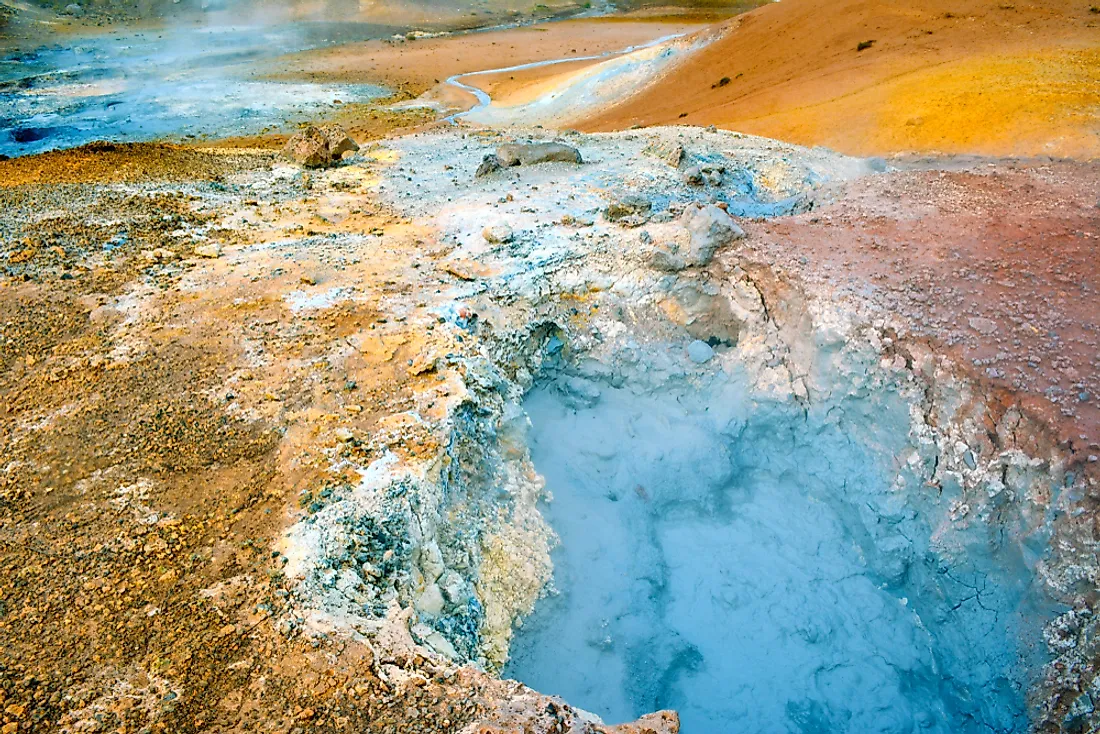What Is A Fumarole?

A fumarole is an opening in the Earth’s crust that emits or vents gases and steam into the atmosphere. They can be found in active volcanoes, along tiny cracks in the Earth, and on the surface of lava flows. In most cases, the presence of fumaroles signifies active volcanic activity. For example, in Hawaii, fumaroles exist within the Kilauea Crater, which is an active volcanic mountain. The temperature within a fumarole is typically between 70 ˚C and 100 °C or higher.
Formation of Fumaroles
Fumaroles form when the extremely hot liquid lava located below the Earth’s surface exerts pressure on overlying rocks, causing them to crack within the Earth’s crust, which creates vents or openings. In addition to steam, the pressure within the interior and exterior of the Earth’s crust also releases numerous gases into the atmosphere, including sulfur dioxide, hydrogen sulfide, hydrogen chloride, hydrogen fluoride, hydrogen bromide, and carbon dioxide. These gases are normally dissolved in the magma during volcanic eruptions. A fumarole rich in carbon dioxide is called a mofette, while one rich in sulfur gases is called a solfatara. The gases released by fumaroles are toxic to humans, and therefore individuals near these emissions should wear protective masks. However, despite being toxic to humans, these gases enrich the Earth’s soil. Fumaroles can also become hot springs when located close to the surface of the Earth.
Steam makes up the largest percentage of gases released by fumaroles. During rainy seasons, water often percolates into the ground depending on the topography and vegetation cover, and once the ground is completely saturated with water, surface runoffs occurs. In areas that show signs of active volcanic activity, water travels through the cracks and openings in the intrusive igneous rocks below the Earth’s surface, and flows further to the liquefied lava chambers where temperatures are extremely high (between 600 °C to 1380 °C). Here, the liquid water is quickly superheated, resulting in a change of state from liquid to vapor. High-pressure forces steam through the fumaroles, releasing it into the atmosphere.
The Link Between Volcanic Eruptions and Fumaroles
In the case of volcanic eruptions, the main vent directly aligned with deposits of hot magma will discharge magma. Upon reaching the surface of the Earth, magma cools as it flows. When pressure from within the Earth is extremely high, the sides of volcanic mountains may break away as magma is discharged through side vents. The flow of magma continues until the underground pressure is greatly reduced, and gas fumes and hot vapor are eventually emitted from fumaroles. However, fumaroles do not emit lava.
Fumaroles and Safety
Areas prone to or exhibiting signs of volcanic activity and fumarole emissions should not be inhabited. However, if such areas are inhabited, caution should be taken due to the poisonous nature of fumarole gases.











